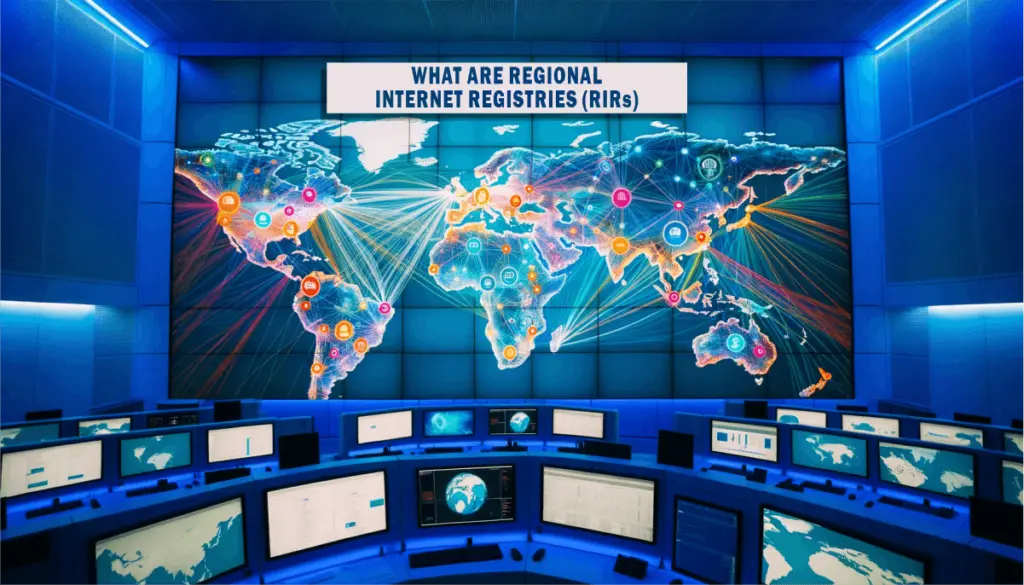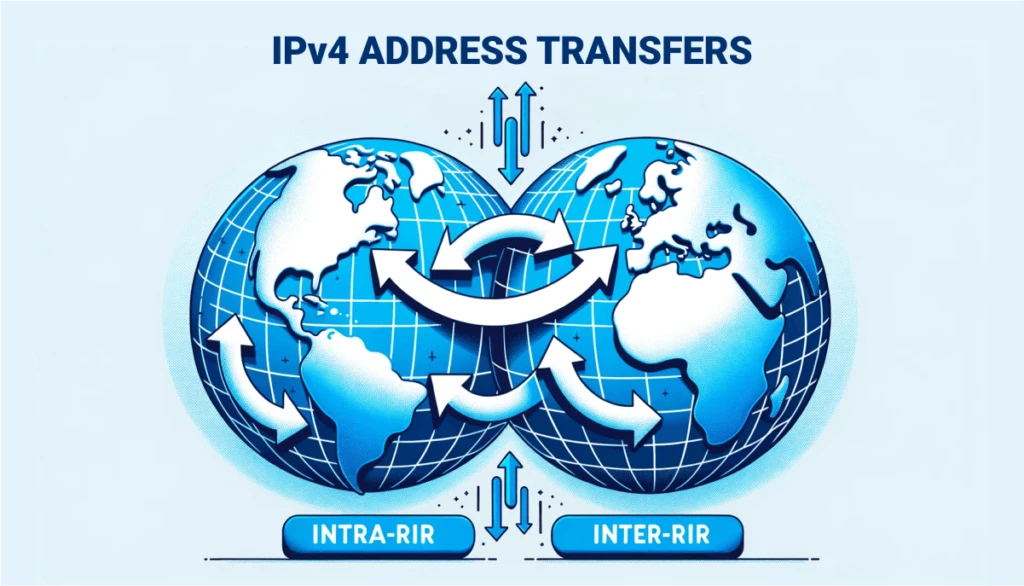The internet, a vast network of networks, requires a structured approach to manage its massive system. This is where Internet Number Resources come into play, with organizations like Regional Internet Registries (RIRs) playing a crucial role.
Table of Contents
The Role of RIRs
RIRs manage the distribution and registration of Internet resources such as IP addresses and Autonomous System (AS) numbers within designated global regions. They cater to a diverse customer base, including ISPs, governments, educational institutions, and end-users.
Membership policies vary across RIRs, but they universally aim to meet the needs of any party requiring internet resources. Distribution of resources by RIRs adheres to established guidelines, ensuring fair and impartial allocation. Each IP address or ASN is strictly assigned to a single entity, a critical task for RIRs that preserves resource functionality and avoids chaos in distribution.
The system of RIRs operates across different geographic regions. This decentralization guarantees a balanced worldwide distribution of resources, helping maintain global network functionality and deterring any region from monopolizing these vital resources.
The Five RIRs
There are five RIRs, each responsible for a specific region of the world:
- African Network Coordination Centre (AFRINIC): Founded in 2005 in Mauritius, AFRINIC has 2,000+ members from Africa, including resource and associate members.
- Asia-Pacific Network Coordination Centre (APNIC): Established in 1993 in Australia, APNIC serves the Asia Pacific region with 22,000+ members, including tiered members, non-members with resources, and associate members.
- American Registry for Internet Numbers (ARIN): Based in the USA and founded in 1997, ARIN serves the US, Canada, and parts of the Caribbean with 16,000+ members, including service members, legacy customers, and ASN-only organizations.
- Latin American and Caribbean Internet Addresses Registry (LACNIC): Founded in 2002 in Uruguay, LACNIC serves Latin America and the Caribbean with 12,000+ members, including Active and Adhering Members.
- Réseaux IP Européens Network Coordination Centre (RIPE NCC): Established in 1992 in the Netherlands, RIPE NCC serves Europe, the Middle East, and parts of Central Asia with 23,000+ members, including local internet registries and end users.
The Relationship with IANA
The Internet Assigned Numbers Authority (IANA) is responsible for the global coordination of the DNS Root, IP addressing, and other Internet protocol resources. IANA allocates large blocks of IP addresses and ASNs to the RIRs, who then distribute them to their customers in their respective regions. This system ensures a structured and coordinated approach to IP address allocation worldwide.
National Internet Registries (NIRs)
In some regions, a National Internet Registry (NIR) is established to manage the distribution of IP addresses at a national level. NIRs operate under the umbrella of an RIR and follow the same policies and procedures.
The Number Resource Organization (NRO)
The Number Resource Organization (NRO) is a coordinating body for the five RIRs. It was established in 2003 to promote and protect the unallocated number resource pool, promote and coordinate RIRs’ activities, and serve as a focal point for Internet community input into the RIR system.
Conclusion
In conclusion, RIRs play a critical role in the management of Internet number resources. They ensure the fair distribution and efficient use of IP addresses and ASNs, and contribute to the stability and reliability of the Internet.
Frequently Asked Questions
What is the role of RIRs?
RIRs manage the distribution and registration of Internet resources such as IP addresses and Autonomous System (AS) numbers within designated global regions. They cater to a diverse customer base, including ISPs, governments, educational institutions, and end-users.
What are the five RIRs?
There are five RIRs, each responsible for a specific region of the world: African Network Coordination Centre (AFRINIC), Asia-Pacific Network Coordination Centre (APNIC), American Registry for Internet Numbers (ARIN), Latin American and Caribbean Internet Addresses Registry (LACNIC), and Réseaux IP Européens Network Coordination Centre (RIPE NCC).
What is the relationship between RIRs and IANA?
The Internet Assigned Numbers Authority (IANA) is responsible for the global coordination of the DNS Root, IP addressing, and other Internet protocol resources. IANA allocates large blocks of IP addresses and ASNs to the RIRs, who then distribute them to their customers in their respective regions. This system ensures a structured and coordinated approach to IP address allocation worldwide.
What are National Internet Registries (NIRs)?
In some regions, a National Internet Registry (NIR) is established to manage the distribution of IP addresses at a national level. NIRs operate under the umbrella of an RIR and follow the same policies and procedures.
What is the Number Resource Organization (NRO)?
The Number Resource Organization (NRO) is a coordinating body for the five RIRs. It was established in 2003 to promote and protect the unallocated number resource pool, promote and coordinate RIRs’ activities, and serve as a focal point for Internet community input into the RIR system.
What are the differences between intra-RIR and inter-RIR IPv4 address transfers?
– Intra-RIR transfers occur within the same Regional Internet Registry (RIR). For example, a transfer between two organizations both registered under ARIN would be an intra-RIR transfer. Each RIR has its policies for these transfers, ensuring the recipient meets the necessary criteria.
– Inter-RIR transfers take place between two different RIRs. An example would be an organization under ARIN transferring IPv4 addresses to one under RIPE NCC. Both the source and receiving RIRs must have mutually agreed policies for such transfers, and both parties must adhere to their respective RIR’s policies and requirements. Learn more about the differences between Intra-RIR and Inter-RIR IPv4 address transfers.
What is the AFRINIC IPv4 transfer process?
AFRINIC’s IPv4 transfer process is designed for intraregional transfers, including those resulting from mergers or acquisitions. The recipient must be an AFRINIC member and justify the need for IPv4 resources, while the transferor must be the rightful owner and adhere to specific policies. The process involves initiating a request, confirming agreement by both parties, AFRINIC’s evaluation, payment of fees, and signing of the transfer application form and Registration Services Agreement to complete the transfer.
What is the APNIC IPv4 transfer process?
The APNIC IPv4 transfer process is a set of procedures and guidelines established by the Asia-Pacific Network Information Centre (APNIC) to manage the transfer of IPv4 address blocks within the Asia-Pacific region.
What is the ARIN IPv4 transfer process?
The ARIN IPv4 Transfer Process refers to the procedures and guidelines established by the American Registry for Internet Numbers (ARIN) for the transfer of IPv4 address blocks.
What is the RIPE IPv4 transfer process?
The RIPE IPv4 Transfer Process refers to the guidelines and procedures established by the Réseaux IP Européens Network Coordination Centre (RIPE NCC) for transferring IPv4 address blocks within its service region, which mainly covers Europe, the Middle East, and parts of Central Asia.
What is the LACNIC’s IPv4 transfer process?
LACNIC’s IPv4 Transfer Process refers to the procedures and guidelines established by the Latin American and Caribbean Internet Addresses Registry (LACNIC) for managing the transfer of IPv4 address blocks within its service region.
What is IP WHOIS?
IP WHOIS is a query and response protocol used to access databases that contain information about the registered users or assignees of an Internet resource, such as an IP address or domain name. These databases store and display details about the entities that have been allocated or assigned these resources.





